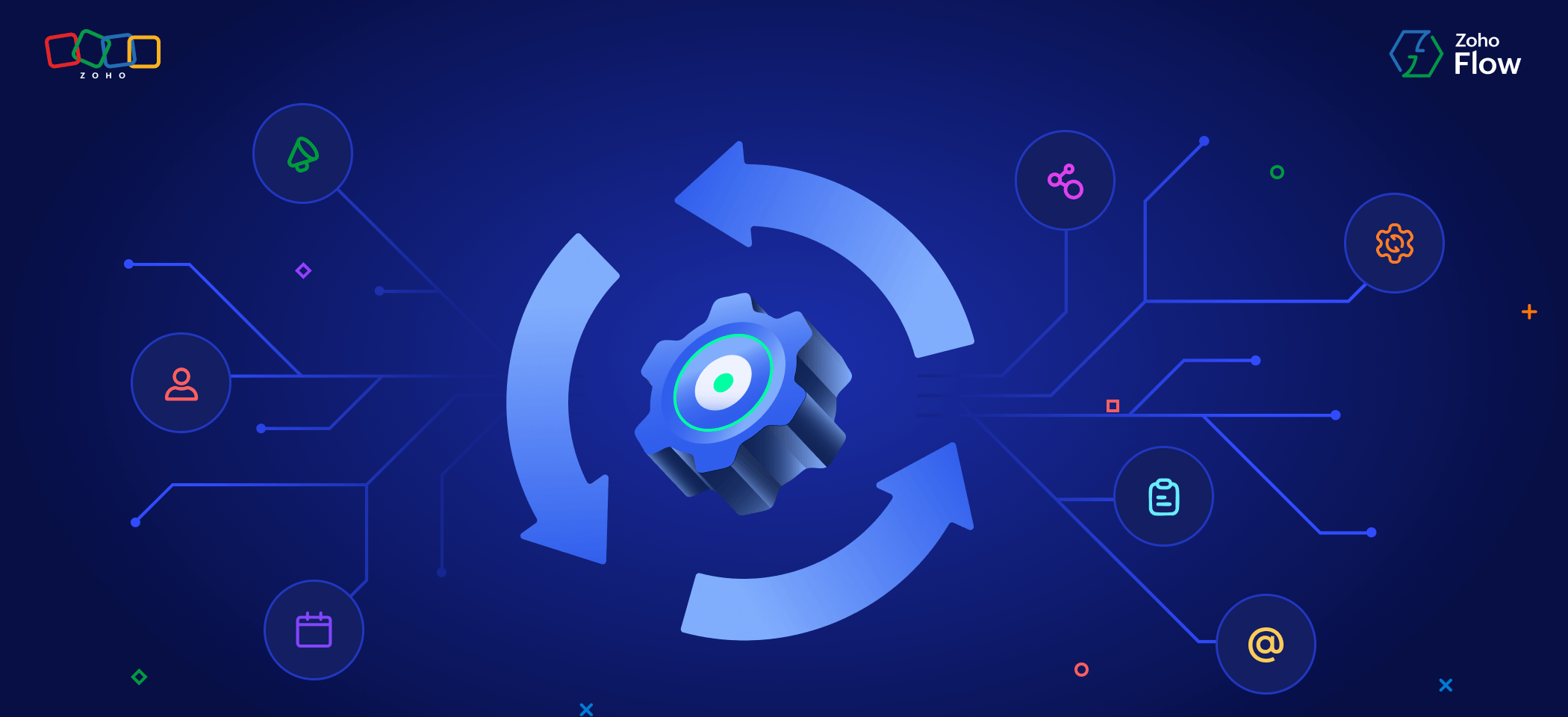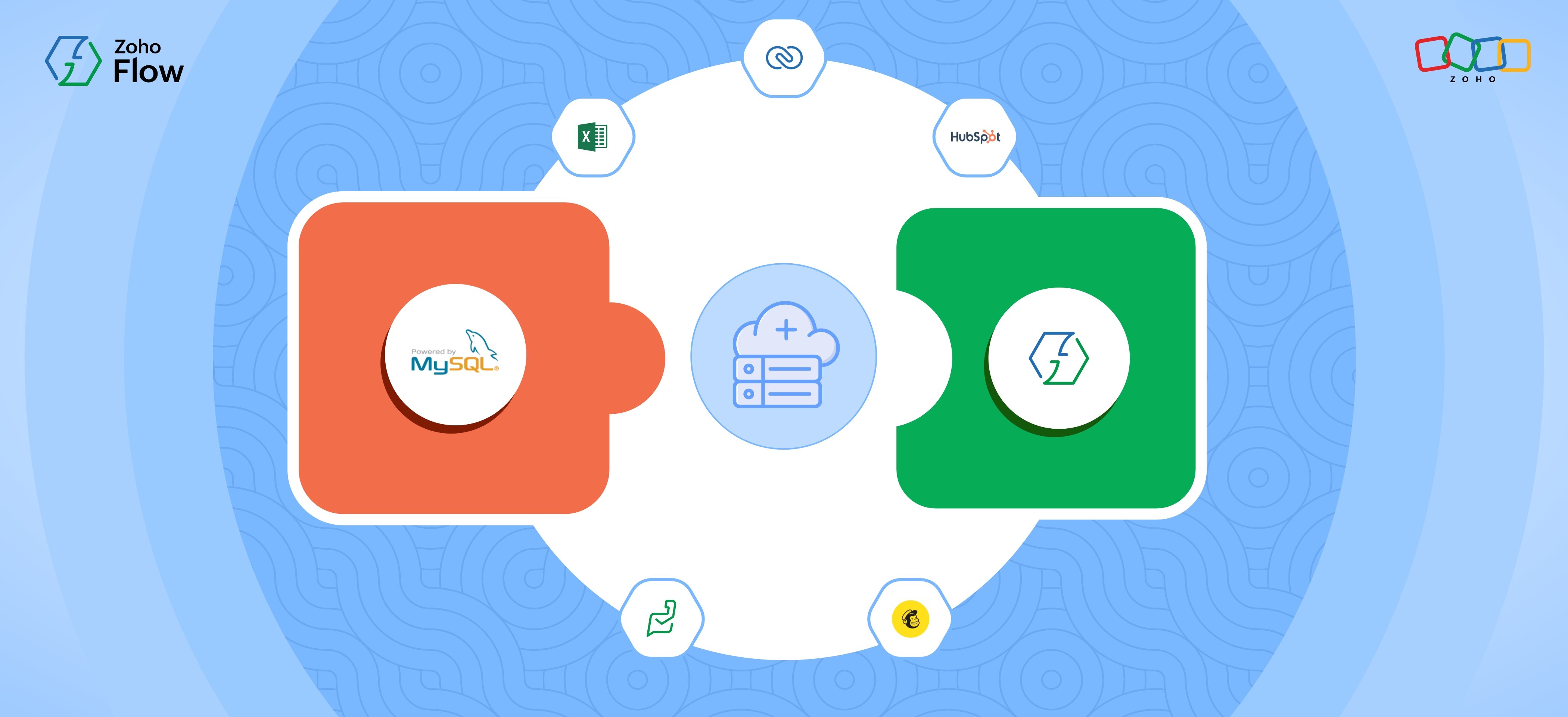6 workflows to automate your ecommerce inventory management
- Last Updated : November 11, 2023
- 2.5K Views
- 4 Min Read

A well-oiled inventory management system is the backbone of any ecommerce business. It performs an array of tasks, like dynamically managing stock, handling business from multiple channels, managing multiple warehouses, executing order fulfillment routines, and providing clear reports on sales and stock. When it comes down to it, an inventory management system is a necessary investment for any ecommerce business.
However, you’re going to want your inventory management system to integrate with multiple apps that you use everyday, so that there’s no disruption of processes. This is where investing in an integration platform like Zoho Flow will prove useful. It gives you the option to use the inventory application that works for you, without having to worry about whether the app will fit well in the already existing ecosystem of SaaS apps.
In this article, we’ll be going through some useful integrations where your inventory management system can connect to another app to carry out a crucial task. All these workflows can be created using an integration platform.
1) Ecommerce store
When someone orders from your online store, you want the following things handled:
Stock: When you make a sale through your ecommerce store, you want item stocks to be updated automatically.
Sales order: You want a sales order to be generated in your inventory management app.
Customer information: Customer information should be synced in your inventory management app.
Shipping information: You want the shipping information in your inventory management app to be reflected in your ecommerce store, so your customers can keep track of it.
Your inventory management system may not come with an integration with your ecommerce store right out of the box, though. However, you can still achieve these necessary workflows by connecting the two apps via an integration platform.
2) Accounting
While accounting in an ecommerce business is a separate division in and of itself, it’s dependent on the data from your ecommerce store and inventory management system.
You want the following things to happen automatically in any integration between your accounting and inventory management apps:
Invoice sync: When an invoice is generated in your inventory app, you want it to be synced to your accounting app automatically.
Customer sync: When a new customer is created in your inventory app, you want the customer to be added to your accounting app, as well.
Credit notes: When an item is returned and a credit note is raised in your inventory app, you want that to also reflect in your accounting app.
Bills: When you have bills to pay your vendors, you want the bills to reflect in your accounting app, along with whether the bill is paid or unpaid.
To create these workflows, just create a connection between your accounting app and your inventory management system in your integration platform.
3) Shipment tracking
To display shipment tracking information to your customers, you’ll need to fetch the data from either a shipment tracking app or the carrier itself, and then store it in your inventory management system. Then the data needs to be reflected in the ecommerce store, where customers can sign in and track the status of their orders.
Setting up the connection between your inventory management system, shipment tracking app, and ecommerce store in your integration platform will make sure that each process executes automatically every time a new order is placed.
4) Payment gateway
If you’re in the B2B space and don’t have a storefront, it makes sense to integrate your inventory management app with a payment gateway. Once you create this integration, the payment link will be sent to your customer’s email address automatically after they place an order. After successful payment, the status of the invoice is updated and a payment receipt is generated. You can also configure a custom message after the payment is received.
5) CRM
A CRM integration is another one which is really popular in the B2B space. Here are some common workflows you can automate by connecting your CRM and inventory management system with an integration platform:
Find out if a lead has made a purchase, and get updates in your CRM for new purchases made by a lead.
Add customers from your inventory app to your CRM. This way you follow up with them and get to know their business better.
Display customer purchases in your CRM so that you can access a customer’s purchase history right from the CRM.
6) Custom notifications
Get instant notifications on your work chat or email whenever more stock needs to be added. You can configure notifications for all sorts of events, such as a new sale, channel-specific sale, cancellations, day-to-day reorders, and more. You just need to connect your work chat or email with your inventory app to execute these kinds of custom notifications.
And really, the best way to get the most out of your inventory management system is to connect it with your existing SaaS stack, such that information flows freely to and from the system. You can achieve this through an integration platform, without having to comprise on app selection.
If you like this article, you might also also want to read up on how you can automate your entire ecommerce business using Zoho and key workflow ideas for your ecommerce business.
 Karthick
KarthickContent Marketer for Zoho Flow. Passionate about helping businesses make better use of technology.


